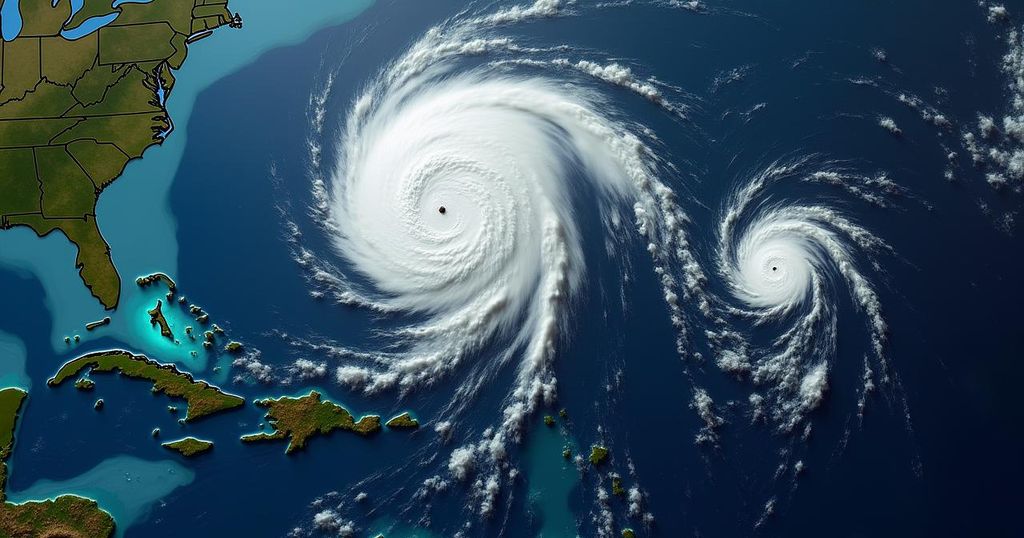Hurricane Kirk Strengthens as Atlantic Disturbances are Monitored
Hurricane Kirk, now a category 1 hurricane with winds at 75 mph, formed on September 30 and is expected to intensify into a major hurricane. Additionally, two other disturbances are being monitored for possible development into tropical depressions, one in the southwestern Caribbean and another coming off Africa’s coast. The next name in line is Leslie.
Hurricane Kirk has transitioned from a tropical storm, forming in the eastern Atlantic, to a hurricane as of October 1, 2024, registering maximum winds of 75 mph. This development marks Kirk as the seventh hurricane of the 2024 Atlantic hurricane season and the eleventh named storm. Forecasters predict Kirk will continue to strengthen, potentially evolving into a major hurricane by the week’s end, as it progresses northwest before making a turn toward the north and northeast. Notably, it poses no threat to land. In addition to Hurricane Kirk, meteorologists are monitoring two other regions in the Atlantic for potential storm development. One disturbance consists of a disorganized low-pressure system situated in the southwestern Caribbean Sea. Meteorological conditions are expected to become increasingly favorable for development, with the possibility of a tropical depression forming as it approaches the Gulf of Mexico or the northwestern Caribbean Sea by the weekend. Furthermore, a tropical wave that has recently emerged off the coast of Africa displays high potential for further development. Conditions are anticipated to become more conducive for strengthening as the system drifts westward, with a probable tropical depression forming within the next few days. The subsequent named storm in line is Leslie. To date, the 2024 Atlantic hurricane season has seen a significant number of named storms and hurricanes. A comprehensive analysis of the ongoing hurricane season and additional weather stories can be found in our weather blogs section.
The Atlantic hurricane season runs annually from June 1 to November 30, typically seeing an increased frequency of tropical storms and hurricanes during this period. The formation of storms depends on various environmental factors including sea surface temperatures, wind patterns, and moisture in the atmosphere. Understanding these factors is crucial for predicting the impact of hurricanes and tropical systems, which can potentially lead to significant consequences for affected coastal and inland regions. The identification and tracking of storms such as Hurricane Kirk and monitoring of emerging disturbances are vital for public safety and preparedness.
In summary, Hurricane Kirk has strengthened into a hurricane with expectations of further intensification, while two additional disturbances in the Atlantic may develop into tropical systems over the coming days. Public awareness and monitoring remain crucial during this active season, as meteorologists continue to analyze weather patterns and provide updates on potential threats.
Original Source: baynews9.com




Post Comment